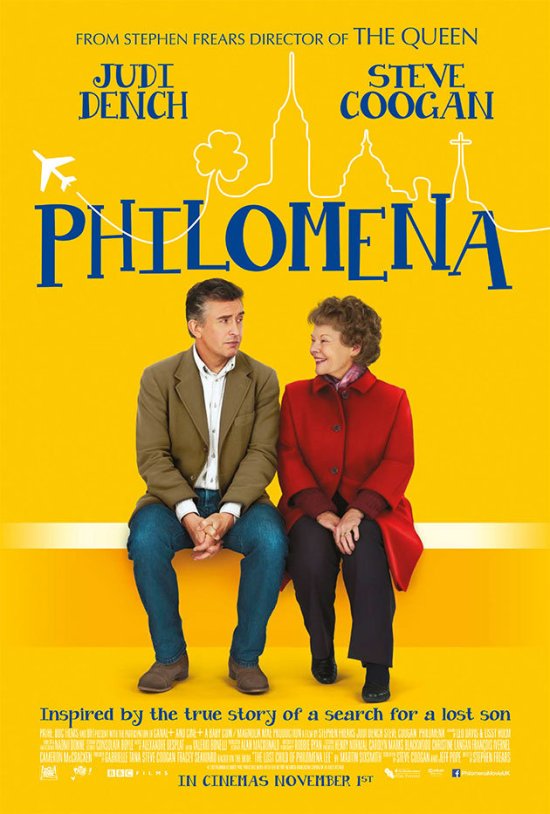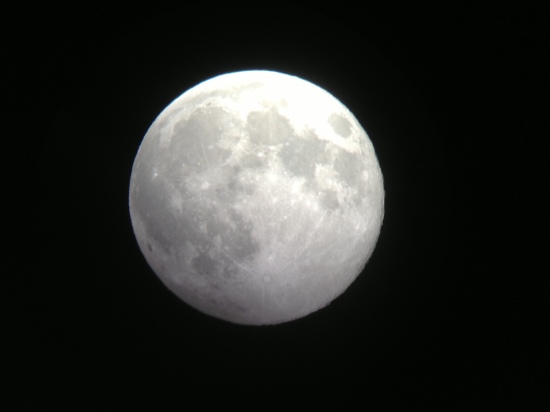Four years ago Steve Coogan was staying in New York when, idly scanning British news stories online one day, he came across an article with an eye-catching headline: the Catholic Church sold my child. It concerned an Irishwoman, Philomena Lee, who as a teenager in the 1950s had been sent to a convent for young unmarried mothers, working in its laundry for long hours each day to repay the cost of housing her and her baby son, Anthony. She had no visitors there; her family had effectively disowned her. When Anthony was three years old, he was taken from her by the nuns and sold for adoption. That was the last she had seen of him, and for 50 years she had no idea how his life had turned out; she had even kept his existence secret from her own family, unable to cast off the shame of having been ‘a fallen woman’.
‘I was very moved by the story,’ Coogan recalls. ‘It touched me and spoke to me.’ It had been written by Martin Sixsmith, formerly a BBC foreign correspondent and later a spin doctor for Tony Blair’s administration. Back in 2004 a friend of Philomena’s daughter, Jane, had cornered Sixsmith at a party and told him Philomena’s story; he agreed to meet Jane, then Philomena, and undertook to find out what had happened to Anthony. His efforts to track down Anthony – which over five years took him to Ireland and America – resulted in a book, The Lost Child of Philomena Lee, which was about to be published when Coogan read the news story.
But something else drew Coogan in: the picture that accompanied the article. It showed Sixsmith and Philomena together, sitting on a bench; he’s smiling at her and she’s laughing. ‘They struck me as an odd couple,’ Coogan says now. ‘Here was Martin, a journalist, an intellectual, middle-class and Oxbridge-educated, who had got to know this retired working-class Irish nurse. That relationship struck me as interesting.’
Back in Britain, Coogan bumped into Gaby Tana, a film producer he knew, and started telling her about the article. ‘She said it sounded an amazing story, and if I thought it might make a film, would I like her to co-produce it?’ He contacted Sixsmith, established that the rights were available, and immediately optioned them.
As a result, Coogan found himself last December on a freezing cold day at Harefield House, a grand 18th-century pile some 20 miles north-west of London, with all the accoutrements of a film set around him. He was looking suave in a smart suit, with an expensive haircut and a light suntan. He not only stars in the film as Martin Sixsmith but also co-wrote the script (with Jeff Pope), and has a producer credit. At one point, Coogan strolled towards an elderly woman with a careworn air. They chatted a little and then broke into peals of laughter; she shoved him playfully. Beneath her brunette wig, this turned out to be Judi Dench, who plays Philomena in the film.
On that day, Harefield House was doubling for the convent in Roscrea, Co Tipperary, where Philomena and Anthony had lived. Inside, a large, handsome reception room has been comprehensively ‘dressed’ to resemble the convent: one sees religious statues, pictures of Christ, crucifixes hanging from the walls, photographs of nuns, and devotional knick-knacks on every available surface.
In the scene to be shot, Sixsmith and Philomena arrive to confront the nuns who had withheld information from her about what had happened to her son all those years ago. He is furious; she is calmer and more forgiving. ‘There’s anger in Martin,’ Coogan concedes. ‘He’s cynical. He’s not at all religious. But it’s not an angry film. Despite everything that happened to her, Philomena has kept her faith. We’ve crafted a story about these two people that became a sort of road movie; they go on a trip together to find out what happened to this boy. They’re two people with different world views, who come to accept other world views and how other people live their own lives. I don’t want to sound pretentious, but tolerance and understanding are really what it’s about.’

Philomena and Martin visit Sister Claire (Cathy Belton). Photo: Alex Bailey
Steve Coogan and Gaby Tana had moved swiftly after optioning the book, and pitched the story successfully to Christine Langan, the head of BBC Films. They decided to tweak the story a little. ‘The book is about the child and what happened to him,’ Tana says. ‘We thought the approach should be more of how the book came about. So the film’s about the relationship between Martin and Philomena, which isn’t in the book at all.’
They started to assemble a cast. Judi Dench was their first choice to play Philomena, so Coogan sent her an early draft of the script and went to meet her at her home. ‘We sat in my garden and he read it to me,’ Dench recalls. ‘I was completely hooked. I couldn’t wait to get started.’
Coogan the comic and Dench the revered actress may seem as much an odd couple as Sixsmith and Philomena, but Dench has form playing opposite professional funnymen; arguably her breakthrough film was Mrs Brown, in which she co-starred with Billy Connolly. Working with Coogan reminded her of that experience. ‘With comics, there can be a real dedication they apply to something that isn’t naturally their form of work,’ she says. ‘And then in between takes, of course, they make you cry with laughter.’
And playing an Irish woman was no stretch for her. ‘My mother was from Dublin and all my relatives are from there or the west of Ireland. The accent wasn’t a problem. When I read the script, I heard my mother saying quite a lot of it very clearly.’
Though Dench had signed up eagerly, Coogan and Tana found it harder to convince their preferred director, Stephen Frears (who made The Queen). ‘He was intrigued by the story, but kept us waiting for a while,’ Tana recalls. The fact Dench was already cast finally clinched Frears’s participation (he had worked with her three times before, most recently in Mrs Henderson Presents). He then worked with Coogan and Pope on rewrites of their script over a three-month period until he was happy with it.
Frears, having read Sixsmith’s book, was astonished by Coogan’s eagerness in acquiring it. ‘Do you know, he got Martin to sell it to him without having read it?’ he told me. ‘It’s extraordinary. But I’m full of admiration for [Coogan]. He has this tremendous moral intelligence. And what we have now is a tragic story about a woman whose son is taken away from her – and there’s another layer, almost like a romantic comedy, on top of it. So you have sadness and happiness at the same time.’
Between takes on set, Coogan and I sit down for what I assume will be a short talk. But we’re still there an hour later, so passionate is he about this project. ‘I’m not a Catholic any more,’ he tells me upfront. ‘I have very complex thoughts about [the church]. But I’ve witnessed second-hand how simple faith is a great comfort to a lot of people. And there’s a dignity and spirituality about that. I didn’t want to trample on it.’

Sophie Kennedy Clarke plays the young Philomena. Photo: Alex Bailey
What also appealed to him about the story was its universality. ‘It’s about mothers, babies, children – things everyone can identify with.’ Coogan also wanted to say something about faith and cynicism, about intuition and intellect, and use Philomena and Sixsmith to embody these characteristics. He and Jeff Pope had several long discussions with Sixsmith and Philomena. ‘A lot of conversations in the film are based on that. Much of the story is invented by Jeff and me:conversations, and some attitudes of the two principal players. But the bones of it were true.’
Sixsmith and Philomena both visited the set during shooting, and Frears says they were tolerant of the tweaks to the story and their characters. ‘Martin’s a decent man, and I told him he was a good sport,’ Frears says. ‘He’s nowhere near as cynical as Steve portrayed him.’ But Sixsmith stayed around to watch some scenes and even offered Coogan a few notes on his performance. ‘The hard thing was resisting my comedic instincts,’ Coogan says. ‘Martin directed me like traffic. He’d motion his hands to say “less” or “more” or “slow down”.’
Frears was faintly incredulous that Philomena was interested in visiting the set for the convent scenes. ‘I told her, you shouldn’t be here – you must have spent all your life trying to stay away from this place. But she’s magnificent. When you meet her, you have no sense of this tragedy in her life. She has no self-pity and she doesn’t carry around a scar. Judi’s character in the film is a woman who has retained her faith – and so has Philomena.’
Dench has played real people before on film – Queen Victoria, Elizabeth I, Iris Murdoch – but here was someone who was still alive. ‘It’s even more of a responsibility,’ she says. ‘It must be very disconcerting to see somebody playing you.’ When the film was shot and edited, Philomena returned for an exclusive ‘cast and crew’ screening. ‘She was sitting behind me with her hand on my shoulder,’ Dench reports. ‘I was terribly conscious of this person, and our responsibility to her.’
In August the film was screened at the Venice Film Festival, where it won the best screenplay award and left audiences buzzing with enthusiasm. It has all the hallmarks of a rarity: both a commercial and critical hit. It is not hard to see why. The central story, of a woman unwillingly separated from her son, is a genuine tear-jerker.
Yet the film is leavened with comedy that hinges on the interaction between Dench and Coogan; playing a world-weary sophisticate, he can hardly believe her excitement at flying to America, and staying in luxury hotels, where she rhapsodises about the all-you-can-eat buffets and the little chocolates they leave on your pillow each night. She recounts to him at length the plots of utterly predictable romance novels, which she concludes with the words, ‘Well, I never saw that coming.’ And Coogan’s deadpan response acts as the punchline.
But apart from the laughter-and-tears combination, there’s also a suspense element; here are two people on a mission in America, confronting a host of unknowns. Will they find Anthony? What has his life been like? Is he happy? Does he know about his mother, and will he want to see her?
I recently met Philomena Lee with her daughter, Jane, in a restaurant near her home in Hertfordshire, where she is known under a different name. She is now 80, a smart, well-coiffed woman with a taste for jewellery and a signature neck scarf. (Dench had already told me, ‘She’s far more chic than I am.’) And she turned out to be as warm, funny and generous-spirited as one imagined her. ‘I never dreamt there’d be a book about my life, let alone a film,’ she said. ‘When it’s your own life you think, well that’s the way it is, it’s nothing special. Can you imagine – Judi Dench playing me! I was so thrilled. And when I met her, oh, she’s a lovely lady.’
(Similarly, Coogan still seemed faintly dazed and star-struck to find himself playing opposite Dench. ‘There were one or two times when I took a picture of me and Judi on set and instantly emailed it to everyone I knew.’) Yet Lee had an inkling that Sixsmith had touched a nerve with readers after his book was published. ‘I was amazed at all the letters Martin received – from other people like me, women who had also lost their babies to adoption.’
After Anthony was born she moved to England; the nuns secured a job for her at a Liverpool boys’ school. Then she moved south to St Albans and worked as a psychiatric nurse and later in a residential care home. Over the years she wrote to the nuns and even visited Roscrea, asking for any clues about Anthony’s whereabouts. But she was stonewalled.
She had two children, Jane and Kevin, with her first husband (she has since remarried), but Anthony remained a secret to them and to the rest of the world. ‘Over the years I’d say to myself, “I’ll tell them,” but never did,’ she says. ‘It was so ingrained in me that I mustn’t. It was the guilt and the shame of it.’ She finally admitted Anthony’s existence to her children in 2003, 50 years after his birth. Within weeks of her revelation, Jane was telling her mother’s astonishing story to Sixsmith.
Philomena cheerfully admits the film takes a few liberties with the facts, but it is true that she still has her faith – though only after a struggle. Since leaving the convent she has never been to confession, and she stayed away from Mass for four decades. ‘I started going back 10 years ago,’ she says. ‘I still believe in the hereafter. I did feel angry at the Church, but I feel resolved now. You can’t go on feeling antagonistic towards people.’
That last comment sums her up. ‘Her own character is so splendid,’ Frears says. ‘She sets a good example. And it seemed to me if Judi was playing her she was in good hands. And I think she gives the best performance of her life in this film.’
It has all turned out rather well, given that this was an idea that started with a man looking at a photograph of two people on a news website. And now there’s a poster for the film that relates directly to its genesis. It shows Coogan and Dench as Sixsmith and Philomena, sitting side by side on a bench. He’s looking quizzically at her. And she’s laughing.
Philomena is released on November 1. Telegraph subscribers can get free pre-release tickets to see the film. For more details, visit telegraph.co.uk/subscriber










